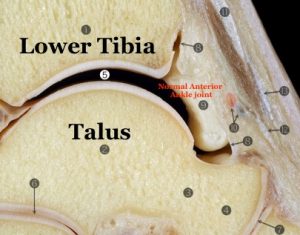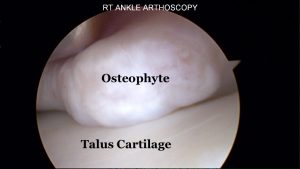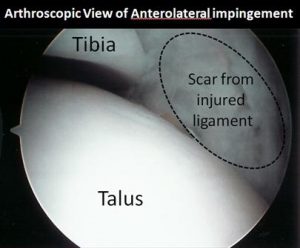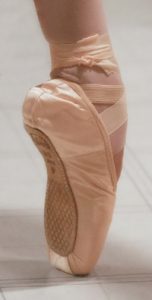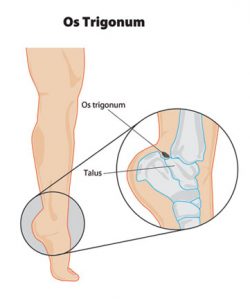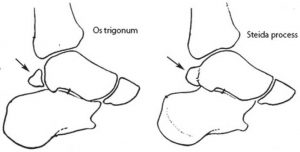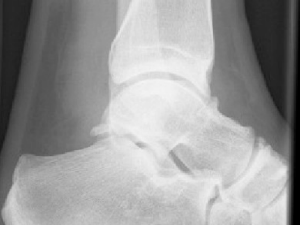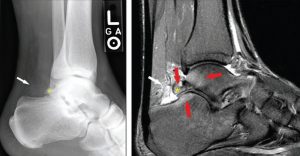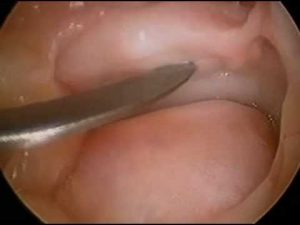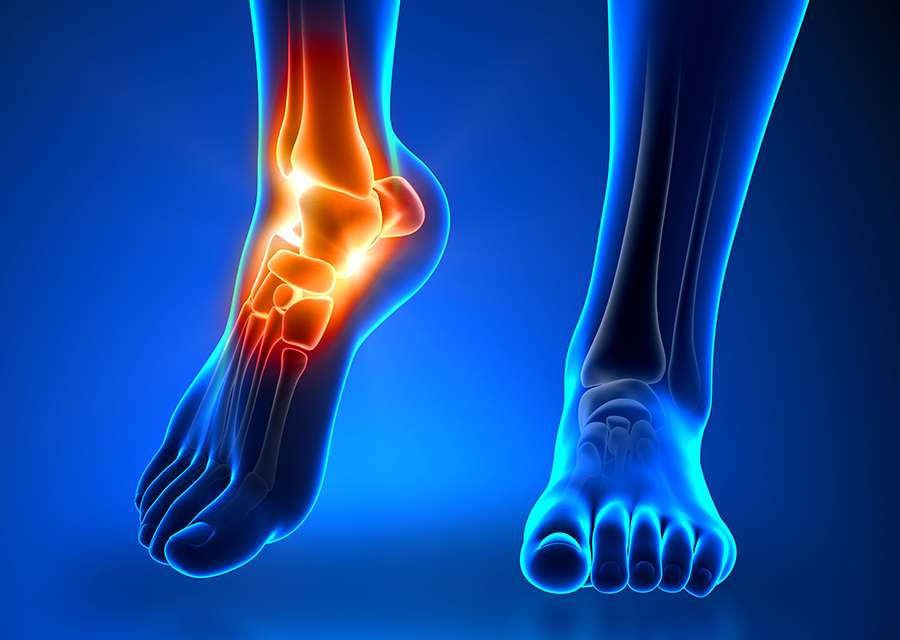Orthopaedics 360
Ankle impingement is characterised by abnormal abutment of excessive soft tissue or bone, during normal ankle movement, resulting in pain. The pain is caused by a mechanical obstruction to movement. Ankle impingement is typically described based on the location of the ‘impingement’ and the underlying cause.
Anterior Impingement
Posterior Impingement
Anterior Ankle Impingement
Anterior ankle impingement is one of the most common ankle presentations seen by orthopaedic surgeons. ‘Anterior’ refers to the region at the front of the ankle joint. The ankle joint is made up of the lower end of the tibia (shin bone) and fibula, which both articulate with the talus bone.
In the normal ankle joint, there is an anterior recess or space, that allows the ankle to ‘dorsiflex’ without any mechanical obstruction. When there is excessive soft tissue scarring or bone formation (‘osteophytes’) in this space, the ankle is unable to move freely, and ‘impingement’ occurs with resultant pain and stiffness.
Bony Vs Soft Tissue Impingement
What is the difference?
Bony Impingement
Anterior Bony impingement is characterised by the formation of spur ‘osteophytes’ at the front of the lower tibia. This is a common condition in athletes with repetitive ankle dorsiflexion, such as football players, soccer players, ballet dancers, and runners. Repetitive micro trauma to the cartilage at the front of the tibia results in progressive scar cartilage (fibrocartilage) formation and ‘osteophytes’. These osteophytes can ‘break off’ and become loose bodies within the ankle joint.
Soft Tissue Impingement
Anterior soft tissue impingement is usually the result of recurrent ankle sprains (inversion injuries). Chronic inflammation and scarring of the synovial lining results in soft tissue entrapment within the front of the ankle joint.
Posterior Ankle Impingement
Posterior Ankle Impingement refers to abnormal abutment of excessive soft tissue or bone at the ‘back’ of the ankle joint. This ‘abutment’ occurs when the ankle is positioned in a plantar flexed position (such as is seen in ballet dancers).
The posterior aspect of the ankle region is made up of the ‘back’ of the tibia (shin bone), the ‘back’ of the talus, and the back of the calcaneus (Heel bone). The tendon to the big toe (FHL tendon) runs through this region, and can be irritated with this condition.
Os Trigonum
The most common cause of Posterior Impingement
The most common cause of posterior impingement is the presence of an ‘Os Trigonum’. An ‘Os Trigonum’ is an un-united tubercle at the back of the talus. It is seen in up to 10% of the population, and often present in both ankles. Most patients with an Os Trigonum do not have any symptoms.
Following either an ankle sprain, or repetitive plantar flexion, such as that experienced in ballet dancers, the Os Trigonum can cause irritation and pain at the back of the ankle.
Steida Process
Another form of bony impingement is seen in patients with a Steida Process. This represents an elongated tubercle (posterolateral) of the talus. Despite not have the ‘un-united’ section that is seen in the Os Trigonum, the same abutment of tissue occurs at the back of the ankle, resulting in pain.
KeyHole Surgery used to treat Impingement
Making the Diagnosis
Anterior Impingement
Patients typically present with pain at the front of the ankle joint, which is made worse with ankle ‘dorsiflexion’ movements. These include walking uphill, running, landing from a jump, and pushing the brake of a car. A history of recurrent ankle sprains is often present.
Typically a weight bearing xray and MRI scan are performed. Bone impingement is visualised on the plain xrays as anterior spurring on the lower end of the tibia. Soft tissue impingement requires a MRI scan for visualisation.
Posterior Impingement
Patients typically present with pain at the back of the ankle joint. This is exacerbated by repetitive plantar flexion activities. While this is classically described in Ballet dancers, whilst performing Pointe work, it can also be seen in many athletes during running and jumping activities. A plain xray will asses for the presence of an ‘Os Trigonum’ or ‘Steida Process’. A MRI scan confirms any associated soft tissue irritation and assess for high signal within the os trigonum.
Keyhole Arthroscopic Treatment for Ankle Impingement
In patients that have failed conservative measures, a keyhole arthroscopic ‘decompression’ is typically offered. This allows direct visualisation of both soft tissue and bony causes for impingement, and clearance of these structures can be performed. Both Anterior and Posterior ankle arthroscopies can be performed.
Do you have symptoms consistent with ankle impingement?
Pain at the end of ankle movement
Difficulty walking uphill | Running | Jumping
Previous ankle injuries
Ankle sprains and arthritis
People don’t generally tend to associate ankle sprains with ankle arthritis due to its seemingly innocuous presentation in comparison to ankle fractures or dislocations, however recurrent ankle sprains can result in serious trauma to the ankle. Post traumatic...
A seemingly simple ankle sprain can lead to ankle arthritis
Ankle arthritis is less common that Hip and Knee arthritis. In fact, while Hip and Knee arthritis is commonly attributed to genetics and ‘wear and tear’ with increasing age, the ethology of ankle arthritis is often quite different. The most common cause for someone...
Pain following Ankle Sprain
There are many causes for ongoing ankle pain following a sprain. Our Surgeons discuss this here.
Disclaimer: Please note that this is general advice only - for more information, please consult your regular doctor, or obtain a referral to see a specialist orthopaedic surgeon.
Orthopaedics 360
Orthopaedics 360
P: (08) 7099 0188
F: (08) 7099 0171
Southern Specialist Centre
Orthopaedics 360
P: (08) 7099 0188
F: (08) 7099 0171
Health @ Hindmarsh
Orthopaedics 360
P: (08) 7099 0188
F: (08) 7099 0171

